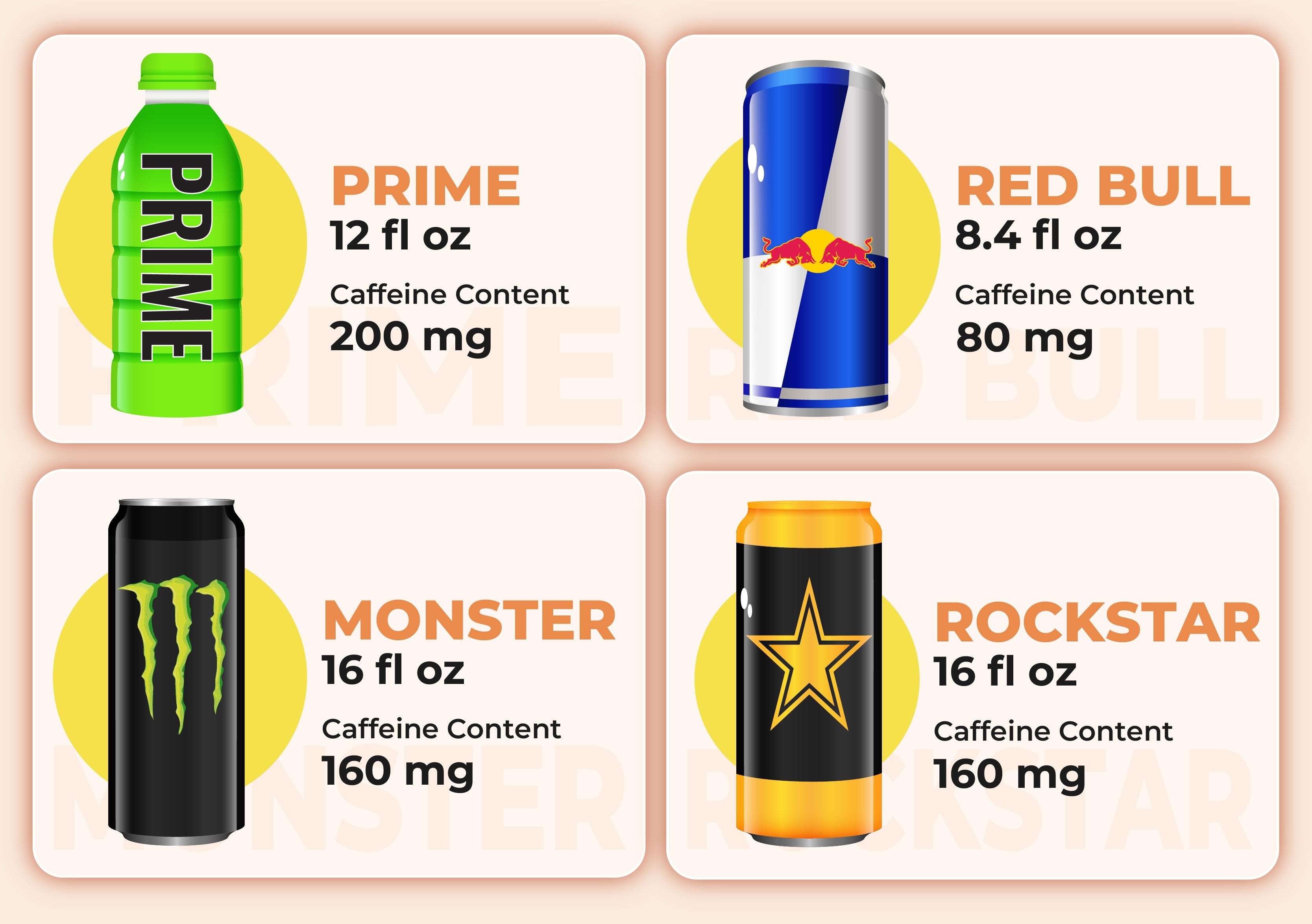Prime Energy has become a sensation, largely fueled by its association with YouTube stars Logan Paul and KSI. But behind the hype, a key question remains: how much caffeine does Prime Energy really contain, and what are the potential health implications, especially for younger consumers? This article breaks down the caffeine content of Prime Energy, compares it to other popular beverages, and examines the recommendations for safe caffeine consumption.
Prime Energy’s Caffeine Content: A Closer Look
A single 12-ounce can of Prime Energy packs a substantial 200mg of caffeine. This places it among the higher-caffeine energy drinks available today. Besides caffeine, Prime Energy includes taurine and B vitamins, ingredients often added to enhance the drink’s energizing effects.
To put this into perspective, let’s compare Prime Energy to other common caffeinated drinks:
As the chart illustrates, one Prime Energy contains roughly the same caffeine as 2.5 cans of Red Bull. Compared to soda, which typically contains around 34mg of caffeine per can, a single Prime Energy drink is equivalent to approximately six cans of soda.
The Food and Drug Administration (FDA) suggests that healthy adults limit their caffeine intake to no more than 400mg per day. Considering that one Prime Energy drink contains half that amount, it’s crucial to understand the potential health effects of such a high dose, especially for those sensitive to caffeine.
Health Risks Associated with High Caffeine Consumption
While caffeine can be a part of a balanced diet and offer benefits like increased alertness and improved mood, excessive consumption can lead to several adverse health effects [2].
Potential Risks of Consuming Too Much Caffeine Include:
- Anxiety and Jitteriness
- Insomnia and Sleep Disturbances
- Digestive Issues
- Increased Heart Rate and Blood Pressure
- Muscle Tremors
- In some cases, caffeine overdose
Prime Energy Specific Warnings
Given its high caffeine content, Prime Energy is not suitable for everyone. Prime Energy drinks are explicitly labeled as not recommended for children under 18, pregnant or nursing women, or individuals with caffeine sensitivities. Moderation is key when considering consuming Prime Energy.
Safe Caffeine Consumption: Guidelines to Follow
The FDA provides guidelines for safe caffeine consumption, but individual tolerance can vary. Factors such as age, gender, overall health, and medication use can influence how caffeine affects you.
General FDA Caffeine Consumption Guidelines:
- Adults: Limit caffeine intake to 400mg per day.
- Adolescents: Should limit caffeine intake to 100 mg per day, if any.
- Pregnant women: Limit caffeine intake to 200mg per day.
Market Response, Regulations, and Concerns
The popularity of Prime Energy, particularly among younger demographics, has sparked significant concern among parents, health experts, and lawmakers.
Actions Taken by Lawmakers & Health Experts
The high caffeine content and the marketing strategies employed by Prime Energy have led to scrutiny from regulatory bodies and health organizations. For example, New York Senator Chuck Schumer has urged the FDA to investigate Prime Energy’s caffeine content and associated health risks. In some regions, including parts of the UK, Canada, and Australia, Prime Energy has faced restrictions or bans.
Public & Media Reactions
The media has amplified the concerns of parents and health advocates regarding the appeal of Prime Energy to children. This has resulted in increased calls for stricter oversight of the marketing and sale of highly caffeinated beverages to young people. While some advocate for more stringent regulations, others support the idea of consumer choice and informed decision-making.
Prime Energy Compared to Traditional Coffee
Coffee remains the most widely consumed caffeinated beverage worldwide. Comparing Prime Energy to coffee can provide further context to its caffeine content.
Caffeine Content in Various Types of Coffee
A single Prime Energy drink contains roughly the same amount of caffeine as two standard cups of coffee or two espresso shots. Consuming two Prime Energy drinks would put an average healthy adult at or above the recommended daily caffeine limit.
Key Takeaways: Understanding Prime Energy’s Caffeine Content
Prime Energy contains a significant amount of caffeine – 200mg per can. While it might appeal due to its association with popular influencers, it’s crucial to be aware of the potential health risks, especially for children and those sensitive to caffeine. Always consume caffeinated beverages in moderation and be mindful of your individual tolerance and health status. Parents, educators, and health professionals should actively educate young people about the potential risks associated with high-caffeine energy drinks.
